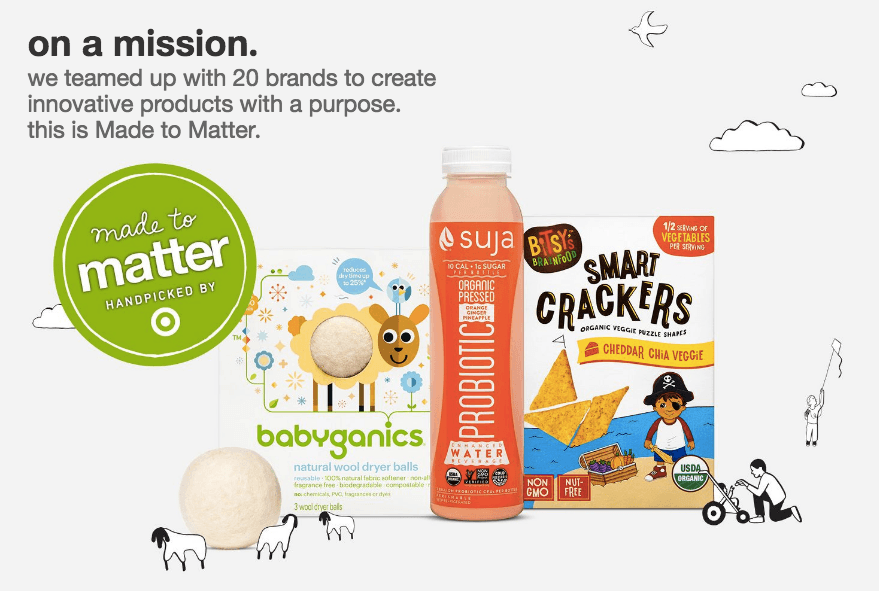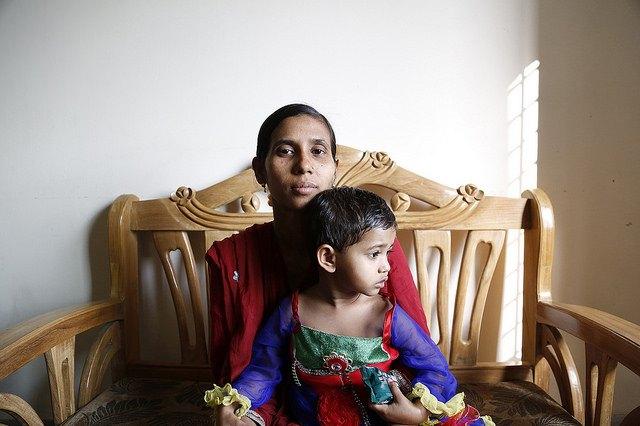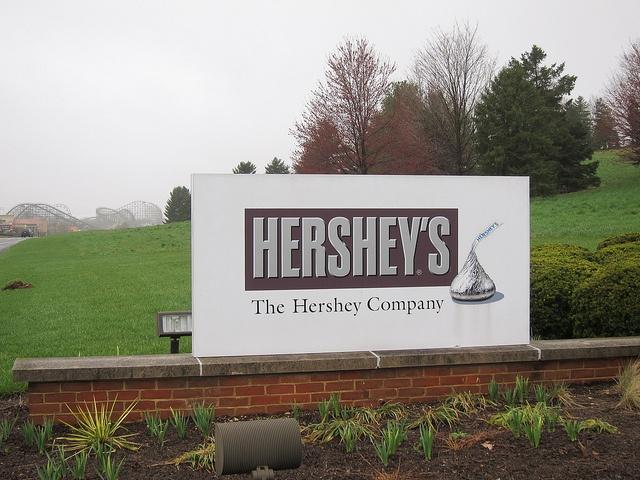The Sustainable Business Case for Cannabis Legalization


Tomorrow evening, June 14 at 6:30 p.m., at the Commonwealth Club in San Francisco, Michael Sutton will lead a discussion on whether Californians should vote “yes” on an initiative this November that would legalize the cultivation and sale of marijuana.
The Control, Regulate and Tax Adult Use of Marijuana Act (AUMA) has the support of leaders across the political landscape, including the state’s lieutenant governor, Gavin Newsome, as well as U.S. Reps Jarred Huffman (D-San Rafael), Dana Rohrabacher (R-Huntington Beach) and Ted Lieu (D-Torrance). AUMA has also been endorsed by organizations including California Council of Land Trusts, Drug Policy Alliance, the California Medical Association and California NAACP. You will not see President Barack Obama endorsing similar legalization anytime soon, but he as also acknowledged that the nation’s current cannabis laws are not working. America's attitudes are changing, evident in the sentiment behind those who support the passage of this law.
As with the case of other attempts to legalize or decriminalize marijuana, arguments over changing cannabis laws will focus on potential tax revenues, social justice, the failed war on drugs and the medical properties of cannabis. But as Sutton, the former president of the California Fish and Game Commission, explained during an interview with TriplePundit, voters should take a look at the current impact that the underground cannabis industry has on the state’s wildlife, water consumption and energy use.
Sutton’s interest in reforming California’s cannabis legislation comes from a natural-resources perspective he gained during his tenure with the Fish and Game Commission. The ongoing struggles of wildlife officers in California’s “Emerald Triangle,” the triad of Humboldt, Trinity and Mendocino counties, which grow the bulk of the state's marijuana, exposed Sutton to the cannabis industry’s destructive side. “Because they were spending all their time on the north coast combating illegal growing operations, whether because of the poaching of wildlife, stealing water or cutting down forests,” Sutton said, “these game wardens were distracted from their jobs. The last thing that they need to be doing is pulling marijuana plants out of the forest.”
From Sutton’s point of view, the marijuana industry as it currently stands is illegal agriculture, so the time has come to legalize and regulate it. And the way this law is written, the industry would also be held accountable under laws such as the California Environmental Quality Act (CEQA) and the state’s endangered species laws.
Due to the shadowy world of marijuana growing, there are not many studies that provide an accurate picture of pot’s impact on California’s resources. One study suggests indoor marijuana use is responsible for 3 percent of the state’s total electricity use, or 9 percent of total household consumption. Add the amount of gasoline or diesel used to fuel generators for indoor farming operations that are running off the grid, and pot growers certainly generate their share of carbon emissions as well. Growing cannabis indoors on a large scale is not sustainable, especially when it comes to power consumption.
Legalizing pot could bring net environmental, as well as a financial, benefits. “Currently the state is spending $100 to $120 million to repair the damage done by illegal growing operations,” insisted Sutton. “This legislation was written to provide a share of the revenues for environmental restoration and conservation, and those in turn can’t be raided by legislature or the governor. That alone provides a powerful justification for legalization.”
An industry that currently costs the state money could go from being a liability to providing the state a new revenue stream. And it would also move the marijuana from one that is literally in the closet to out in the open.
And in the end, cannabis is a plant, and thrives outdoors. But because growing pot is illegal, it is hidden inside people’s homes and remote shacks and greenhouses. So not only is an excessive amount of electricity being used to grow pot, but the industry is currently using a huge amount of water that could otherwise be used by the state’s farmers—who currently are regulated and say they have their struggles procuring enough water to grow their crops.
According to Sutton, last year DEA agents raided 2,000 growth sites in California, many of which were on state or federal lands. Those plants those agents pulling out were thirsty—Sutton quoted the typical estimate that a mature pot plant requires six gallons of water a day. These same investigators found 135 illegally built dams or other water diversion contraptions that resulted in the theft of water.
The current illegal marijuana market has its impact far beyond California’s north coast. Sutton explained the struggles land owners, including rice growers, have in the Sacramento Delta region. Some landowners have had to resort to hiring private security firms to pull out marijuana plants sowed by growers in restored wetlands. “So the landowners' perspective, who were told they had to take steps for the remediation of these lands, they feel as if they are getting punished again, as no good deed goes unpunished!” Sutton exclaimed.
In considering voting for this law, Sutton says there are five factors to consider:
- Improved data collection of energy data, which could help California take even more steps to fight climate change.
- An improvement in farming techniques, reducing the use of water, pesticides and additional chemicals used to grow pot.
- The potential that more pot growers would use clean energy for their operations as this industry would have to follow regulations along with every other industry in California.
- A legal pot industry would be subject to environmental laws, reducing actions such as illegal deforestation and the unnecessary killing of wildlife.
- The potential to raise hundreds of millions of dollars in revenues, benefiting climate-friendly projects such as the restoration of forest lands that had been transformed into marijuana farms.
“The carbon footprint of this industry could be reduced 75 percent without even shifting production outdoors, but if it moves outdoors, then you could succeed in getting rid its total environmental impact,” Sutton said. “Clearly, prohibition has not worked, especially when you look at marijuana’s climate impact. But we need to make sure legalization doesn’t make it worse, but instead, reduces impact on natural resources, energy and water use. And this law will allow for that to happen.”
Image credit: James St. John/Flickr
Target's 'Made to Matter' Brings Sustainable Products to the Masses


Target recently joined Freya Williams' enviable list of "Green Giants" -- companies that generated a billion dollars or more in annual revenue from products or services with sustainability or social good at their core. This admirably lists includes giants like Tesla, Unilever, Toyota, Nike and GE and brings the sum total of revenue in the sustainable product economy to a jaw-dropping $150 billion and change. No small potatoes. For Target, it's all about the Made to Matter program.
Made to Matter launched in 2014 as an experiment to see if it was an effective way to meet customers' demand for natural, organic and sustainable products. The 16 original brands in the collection spanned six categories—Baby, Beauty and Personal Care, Grocery, Healthcare and Household and included customer favorites from Burt's Bees to Seventh Generation and brought new attention to unfamiliar names like SheaMoisture and Zarbee's Naturals.
Well, it was a pretty big success. As Jennifer Silberman, Target’s Corporate Social Responsibility VP, told me at Sustainable Brands 2016, the products included in the Made to Matter category experienced 30% growth in 2015. That's 1.5x the normal growth rate for a product in a Target store.
So now, Target is expanding the Made to Matter category, bringing in new manufacturers and new products from existing brands.
The products produced by the 20 brands must address at least one of the following issues: reduced sugar, closing the loop, clean label (transparency), less packaging/reduced waste or dietary restrictions. These 5 issues are noted "pain points" for Target customers: areas they've identified where they want more product offerings. The 102 products in "Made to Matter" certainly go toward meeting this customer need.
The criteria for being included in Made to Matter are somewhat vague. The brands are selected by a dedicated team for meeting the five goals above. They don't have strict numbers or cutoffs behind them, but Silberman insisted that wasn't the point, calling the purpose-driven group of brands "inspirational." Indeed the brands that are included in the program also have robust sustainability commitments of their own and loyal customers to critique them.
The fact that I can get these products without a trip to a special store is a huge win for me on convenience. These brands are now easily accessible to people who would never make a special trip, but are inclined toward sustainability if all things are equal. That's a huge win for the economy over all. We'll be watching this one while we enjoy our Annie's Mac washed down with some Suja juice.
Image credits: Target
US-India Pact on Renewables Will Help Keep Coal in the Ground


President Barack Obama and Indian President Narendra Modi signed a pact last week, extending a commitment originally established in 2014, to join forces to combat climate change with a huge commitment to renewable energy.
The pledge acknowledges commitments made in Paris last year at the COP21 climate talks and defines a path for both countries to achieve their nationally determined contributions (NDCs). In particular, the U.S. has pledged to support India, the world’s third largest carbon emitting country and second fastest growing economy, in its ambitious goal of deploying 175 gigawatts of renewable energy by 2022. That would bring it up to a level of renewable capacity comparable to the U.S. today.
The sweeping announcement contains a wide array of initiatives including:
- Cooperation on rooftop solar in three Indian states
- A Greening the Grid initiative designed to accommodate the integration of renewables
- Developing enhanced solar resource maps for India
- Investments exceeding $3.5 billion targeting an additional 4.5 GW of additional solar
The two U.S. solar companies who will be developing these projects are 8minutenergy and Sunlink.
Eight minutes is the amount of time it takes for energy to reach the Earth from the sun. The company named after this time interval will be providing 4 GW of solar in India. They currently have solar portfolio of 3,000 megawatts, with extensive holdings in California. They are beginning to expand into Latin America and India.
Sunlink will be partnering with domestic Indian companies to provide an additional 1.4 GW of solar capacity.
The pact also includes a substantial number of financing initiatives. These include a Clean Energy Financing Hub, a US-India Clean Energy Finance Task Force, initiatives from US-based philanthropic organizations including the David and Lucile Packard Foundation, Jeremy & Hannelore Grantham Environmental Trust, John D. and Catherine T. MacArthur Foundation, and the William and Flora Hewlett Foundation, with matching funds from the government of India.
In addition there are the US.-India Clean Energy Finance initiative, U.S.-India Catalytic Solar Finance Program, a memorandum of understanding between the US Export-Import Bank (EXIM) and the Indian Renewable Energy Development Agency (IREDA), and Promoting Energy Access through Clean Energy (PEACE) to incubate off-grid enterprises. It’s going to take a lot of money to make all this happen.
The pact will also include US support for six nuclear reactors in India by 2030, updates to the Energy Conservation Building Code, and an advanced innovation program targeted at solar energy, building energy efficiency, and advanced biofuels over the next five years, as well as a public-private research effort focused on the smart grid and storage.
If all that wasn’t enough, there was also a program for solar job skills training with a target of 50,000 solar professionals, a climate fellowship program, efforts on air quality, heavy duty vehicles, some work on fossil fuels including gas hydrates and refinery improvements and a number of environmental stewardship programs.
The reason this pact is so important is that India is looking at tremendous growth in energy demand as millions of people gain access to power for the first time. Given India’s enormous soft coal reserves and their financial challenges, without support like this they would have no choice but to rely on coal to build their future upon, putting the entire planet at risk.
On the day of this writing, India just announced the cancellation of four proposed coal plants with a combined capacity of 16 GW. These would have produced a tremendous amount of carbon emissions and should be cause for collective relief for all (except perhaps those planning to build the plants). The entirety of this capacity will be offset by plans to install 12 GW of solar, 4 GW of wind, 400 MW biomass power, 250 MW of small hydro, and 10 MW of waste to power. An added benefit is that most of these renewable plants can be brought online more quickly than coal plants.
Image credit 8minutenergy Renewables
Singapore Stock Exchange Launches Sustainability Indices


by Vikas Vij - Investors increasingly want access to information on ESG factors in order to evaluate listed companies. Leading global stock exchanges now recognize that corporate disclosure on sustainability performance is an important element in the creation of a stable financial system that advances consistent economic growth. Stock exchanges can be the critical lever to foster collaboration between investors, regulators and companies to improve corporate transparency and performance on ESG issues.
In pursuit of this objective, the World Federation of Exchanges (WFE) had released guidelines in 2015 for ESG-related metrics that companies should release to investors. Companies listed on the Federation’s 64 global exchanges were urged to report on 30+ metrics to help investors in their decision making. A key driver behind this move was the growing demand of large investors to have more comparable disclosures on sustainability to arrive at more accurate market valuations.
Now Singapore Exchange (SGX) has taken the lead to announce the launch of SGX Sustainability Indices. SGX’s partner, Sustainalytics, provided the ESG research and ratings for SGX-listed companies. The Sustainability Indices suite comprises four new indices, which include SGX-listed companies that are considered to be clear front-runners in ESG standards when compared to their peers.
According to Loh Boon Chye, CEO of SGX, investors across the world are placing increasing importance on ESG, resulting in significant growth of AUM (assets under management) allocated to ESG strategies and growing demand for transparent benchmarking tools.
SGX Sustainability Indices provide a transparent avenue through which investors can assess the sustainability practices of SGX-listed companies and identify ESG leaders in Singapore. They will also help to further profile SGX-listed companies with strong relevant credentials among a growing pool of ESG-aware international investors.
Commenting on the launch of SGX Sustainability Indices, David Smith, Head of Corporate Governance at Aberdeen Asset Management said that the company fully supports the integration of ESG into the investment process. As a long-term investor, Aberdeen firmly believes in the need to consider and fully understand all risks, rather than narrowly defined financial risks, that relate to a company’s long-term success.
Source SGX.com
Image Credit: Flickr via rogerbucher.com
Scaling the heights with a purpose


by Adam Woodhall - The Crowd event, held monthly in central London, always offers thought-provoking themes, and the June edition didn't disappoint. Held at the impressive HQ of the ICAEW, we considered the importance of Purposeand were also challenged to consider how the organisations represented, Patagonia Clothing and Grant Thornton UK LLP, could be connected.
What initially connects these contrasting organisations is what, at first view, appears to be very different people who represented their organisations for the evening. Rick Ridgewayis an American man in his 60s who is the Public Engagement VP of a clothes manufacturer, and Sascha Romanovitcha British woman in her 40s who is the leader of an accountancy firm. An inspiring connection is they have both scaled the heights: for example, Rick having climbed Mount Everest and Sascha serving the first female to be elected as CEO of a major accountants.
Furthermore, they both shared a passion for their organisations’ mission and purpose; and sitting at the front of the auditorium, I could tangibly feel this emotion.
Patagonia mission:
"Build the best product, cause no unnecessary harm, use business to inspire and implement solutions to the environmental crisis."
Grant Thornton mission:
"Shaping a vibrant economy"
Where does this purpose come from? Whilst it has plenty of logical, head-based rationalisations, what was clear is that for these two leaders, it also comes from the heart. Throughout the engaging discussion, facilitated with a smooth and steady hand by Axel Threlfall, Editor-at-Large of Reuters, the speakers authentically kept returning to these purpose statements.
An example of how these organisations are representing their purpose is not only with what they are doing, but what they are not doing. In addition to reducing their environmental harm, Patagonia also famously ran an advert that stated “Don’t buy this jacket”. Rick stressed this wasn't a marketing trick; they genuinely want people to buy less stuff, including their own.
The financial services industry has had its challenges in the past decade, and, as Sacha admitted, no business is "whiter than snow”. However, she believes past inaction shouldn't put organisations off aligning to their purpose. An example is that her business will not work with clients who want to pay no tax.
What are the rational reasons for a purpose, then? An online poll run by The Crowd asking where attendees thought the business case for purpose is the strongest, produced a clear majority: 56% believed it was more engaged employees. Again, both companies showed similarities: for example, Patagonia receives between 300 and 1200 applications for all jobs, and Grant Thornton's employee turnover is down over 25%. The second most popular reason for purpose, with 28% voting for it, was innovation; that idea also came across clearly from both organisations, with numerous illustrations given demonstrating a fresh approach to business.
Talking from the heart again, both speakers gave inspiring examples. Sascha invoked Michelangelo's exultation that "Every block of stone has a statue inside it and it is the task of the sculptor to discover it" and suggested it is the role of the CEO to find the purpose in an organisation. Rick delighted us with the policy that Patagonia workers can go surfing whenever they want, as long as they don't let their co-workers down.
In conclusion, the discussion demonstrated that purpose could bind companies on a mission and connect two seemingly very different organisations and people. I'll leave the last words to Sascha: "Our people ask themselves: 'What do I care about? What does my business care about?' If you get those two aligned, you're pretty much there."
Photo: Elina Yumasheva
3p Weekend: 8 Companies Going All-In on Ocean Conservation


With a busy week behind you and the weekend within reach, there’s no shame in taking things a bit easy on Friday afternoon. With this in mind, every Friday TriplePundit will give you a fun, easy read on a topic you care about. So, take a break from those endless email threads and spend five minutes catching up on the latest trends in sustainability and business.
On June 8, people and organizations around the world marked World Oceans Day, an annual commemoration of ocean conservation and health. Of course, the battle for healthier oceans will take more than 24 hours to wage, a fact both sustainability advocates and forward-thinking organizations know well.
Day-in and day-out, advocacy groups and non-governmental organizations work to address pervasive problems like ocean warming and acidification, plastic waste, and overfishing. But here at TriplePundit, where we champion public-private-NGO partnerships and corporate social responsibility (CSR), we wondered what companies are doing to fight this fight. From startups founded with conservation at their core to leading companies making oceans a CSR focus, this week we tip our hats to private-sector firms making a difference.
1. Whole Foods Market
Whole Foods Market caught some flak last year for selling tilapia farmed by prison laborers earning $1.50 an hour. But a few months later, Greenpeace was quick to remind consumers that the health-focused grocery chain is actually ahead of the pack when it comes to seafood sourcing -- giving Whole Foods top ranks in its annual report that tracks environmental and human-rights issues in seafood supply chains.
But beyond the products it sources and sells, Whole Foods makes ocean conservation a key focus of its CSR efforts. Earlier this year, Whole Foods linked up with the Nature Conservancy and the Billion Oyster Project to revitalize the New York harbor and restore oyster fisheries. A healthy one-acre oyster reef has the potential to filter approximately 24 million gallons of water per day, say the partners. So, beyond sourcing tasty seafood, restoring New York's oyster fisheries is a boon for the whole harbor. Whole Foods plans to partner on similar oyster-restoration projects in Seattle, Atlanta, New Orleans, Oakland and Austin, Texas.
The grocery chain also makes it a priority to educate consumers about conservation and the importance of sustainable seafood, including efforts such as this Twitter chat with TriplePundit.
2. United By Blue
United By Blue Brand Video from United By Blue on Vimeo.
Founded in 2010, outdoor apparel startup United By Blue began with ocean conservation in mind. For every product sold over the past six years, the Philadelphia-based company removed one pound of trash from oceans and waterways through company-organized and hosted cleanups.
The company and its founder, Brian Linton, have hosted 151 cleanups in 25 states -- removing a staggering 284,467 pounds of trash from rivers, streams, creeks and beaches. The company also hosts an ongoing social media conversation around ocean and wildlife conversation -- encouraging fans to share their outdoor, travel and volunteer photos with the hashtag #BlueMovement.
3. Monterey Bay Aquarium
The Monterey Bay Aquarium, a not-for-profit corporation founded in 1978, opened to the public in the 1980s and now attracts nearly 2 million visitors annually. While some have come to shudder at the thought of sea creatures in captivity, the Monterey Bay Aquarium Foundation is an entirely different animal (excuse the pun).
The foundation works to promote ocean conservation and sustainable fisheries through both research and policy advocacy. Its Seafood Watch program, established in 1999, is one of the most respected sources of science-based information used by business and consumers to find and purchase seafood from ocean-friendly sources.
The aquarium also offers free access for students and teachers to bolster the next generation's appreciation for our oceans. Since 1984, more than 2 million schoolchildren and teachers took part in free in-depth programs on ocean biodiversity and conservation.
4. Norton Point
If you've never heard of Norton Point, don't feel too out of touch. The eyewear company officially launched two days ago with the campaign and hashtag #SeaPlasticDifferently. The social media moniker is fitting with the company's story, as well as its flagship product: the world's first line of sunglasses made from post-consumer ocean plastics.
The plastic is recovered from beaches and waterways in Haiti, where local community collectors are paid a living wage for the material, the company's founder, Ryan Schoenike, told TriplePundit in an email. Like United By Blue, Norton Point pledges to remove one pound of ocean debris for every product purchased. It will also donate proceeds from its sales to the Ocean Conservancy and partnered with the NGO for education and outreach.
The company, based on Martha's Vineyard in Massachusetts, is raising funds on Kickstarter to expand its business operations. With 27 days to go, it raised more than $26,000 toward its $37,000 goal at press time.
5. Bank of America
It may be surprising to see Bank of America on this list, but the financial institution is actually a big supporter of ocean conservation efforts. It has been a "dedicated sponsor" of the International Coastal Cleanup for 13 years, says the Ocean Conservancy, and encourages employees get their hands dirty and take part in the annual event.
Last year, 2,000 Bank of America employees took part in International Coastal Cleanup events around the world, helping to remove millions of pounds of trash from beaches and waterways.
6. The Sea Bin Project
Australian surfers Andrew Turton and Pete Ceglinski spent years watching garbage float by as they headed out to catch the next big wave. Inspired to do something about it, the two devised a concept to engage ports, marinas and yacht clubs in the fight against ocean plastic.
After raising more than $250,000 on the crowdfunding platform Indiegogo, the duo is only a few months from making their vision a reality. Their product, a low-tech rubbish collection system called the Seabin, centers around a shore-based water pump -- which creates a flow of water into the bin, bringing with it bottles, bags and other debris. After securing a manufacturing contract, the company expects to ship its first Seabins later this year.
7. Samudra Skin & Sea
Founded by Shilpi Chhotray, a senior manager at Future 500, a global nonprofit specializing in stakeholder engagement, Samudra Skin & Sea was based on ocean conservation from the start. Even its name, the Indian word for ocean, gives nod to the company's core mission.
The company partners with the Marine Mammal Center, a research and education organization based in Sausalito, California, in an effort to expand knowledge about marine mammal health, ocean health and global conservation. But the product supply chain is where things really get interesting: Its organic skincare line features sustainable wild-harvested seaweed.
The company works with Larry Knowles, owner of Rising Tide Sea Vegetables and Mendocino, California’s resident seaweed expert, to source its main ingredient. Knowles, who has harvested seaweed off the coasts of Northern California since 1995, uses careful and sustainable practices and believes in a systems-thinking approach to marine ecosystems. The small startup sells its wares at a few shops in California, and its online store will go live in August. Click here to check out Chhotray's op/ed on TriplePundit, where she explains more about sustainable seaweed harvesting.
8. Method
Personal care and household cleaning brand Method was a sustainability darling from the moment it jumped on the scene. After launching with a few natural home cleaning sprays in 2001, the company was on Target shelves nationwide only a year later. In 2009, Method became one of the first Cradle to Cradle endorsed companies, with 37 C2C certified products at launch, among the most of any company in the world (now up to 60 certified products and counting).
And in 2012, it rocked the packaged goods industry again by creating soap bottle packaging made almost entirely from recovered ocean trash. The bottle itself isn't intended to eliminate the ocean plastic crisis -- as no single supply chain could accomplish such a feat -- but rather raise awareness of ocean conservation among shoppers, as well as show other companies what's possible with an innovative supply chain. The company continues to champion ocean cleanups with partners ranging from Whole Foods to Sustainable Coastlines Hawaii.
Image and video credits: 1) Flickr/Gail; 2) Whole Foods Market; 3) United by Blue; 4) Monterey Bay Aquarium; 5) Norton Point via Kickstarter; 6) Natarajan Rajan for the Ocean Conservancy; 7) The Sea Bin Project; 8) Rising Tide Sea Vegetables; 9) Method
Three Years After Rana Plaza, Worker Safety Improves in Bangladesh


Nothing positive can be said about the 2012 Tazreen Fashion factory fire, the Rana Plaza factory collapse the following year, or the other preventable disasters that destroyed the lives of garment factory workers and their families in Bangladesh. But those tragedies catalyzed various stakeholders within the country’s garment industry to take action in order to minimize any chance that a similar disaster would occur yet again. Rana Plaza is a huge blot on the reputation of the global fashion industry, made worse by the fact that many companies were slow to contribute to a fund set up to help victims and their families.
One significant outcome since 2013 is the Accord on Fire and Building Safety in Bangladesh, a five-year independent and legally-binding agreement forged between some of the world’s largest apparel manufacturers, retailers and trade unions that resulted in a commitment to bolster the safety of Bangladeshi garment workers.
Rob Wayss, the Accord’s executive director, spoke with TriplePundit by telephone from his office in Dhaka, Bangladesh, to give us insight about the progress that has been made on workers’ safety over the past few years.
'Unprecedented' progress
Wayss brings 20 years of experience working on labor rights, including several within Bangladesh, to the Accord. He spent many years working for the AFL-CIO’s Solidary Center, including four years spent in Bangladesh focused on fundamental rights and workplace issues. His journey then took him to the International Labor Organization (ILO), for which he continued to work on workers’ fundamental rights within the ready-made garment sector. Wayss’ experience leading labor law reform and advocating for improved labor relations at the enterprise level primed him for his position with the Accord, which he has held since 2013.
“Unprecedented” is a term Wayss constantly repeated during the interview, and considering where workplace safety in Bangladesh was in 2013 compared to where it is now, much has been accomplished.
As Wayss pointed out, a similar accord that promised to reform Bangladesh’s garment industry was already agreed to a year before the Rana Plaza disaster. Four signatories had to sign the agreement in order for it to take effect, but only two companies, Phillips-Van Heusen (PVH) and the German fast-fashion company Tchibo, were willing to put their names on the agreement. The the world recoiled at the horrors of Rana Plaza, and in the months afterward, trade union representatives sat down with some of the world’s largest fashion brands with the understanding that, finally, something had to be done.
As a result, the Accord has grown to the point where 217 leading fashion brands signed on as signatories at press time. These brands are solely responsible for funding the Accord -- providing the organization an annual budget of approximately $10 million to inspect factories, train workers on safety issues, and enforce six key components to which Bangladesh’s labor ministry, companies and unions have agreed.
“It’s an unprecedented agreement -- there’s no other country or other globalized industry where this kind of agreement has been placed,” Wayss said at the beginning of the interview. “And it’s working. And I believe it’s working very well. That being said, while there’s been a tremendous amount of progress, the progress on making the factories safer for Bangladeshi workers is still too slow.”
One of the Accord’s biggest accomplishment is the scale by which factories have been inspected and audited for electrical, fire and structural safety. Before the Accord, factory safety inspections were mostly conducted by generalists with a background in social audits. For the most part, they did little more than carry around a clipboard and trudge through a list of checkboxes. Now, however, these audits are now carried out by professionals who are qualified industrial engineers. “We’ve inspected more than 1,600 factories,” Wayss said with unwavering enthusiasm, “which is amazing accomplishment.”
Wayss estimated that the number of inspections carried out by the Accord has covered approximately 45 percent of the factories in Bangladesh that export garments overseas; those factories, in turn, manufacture 40 to 45 percent of the total value of Bangladesh’s garment industry. One would assume that is quite an impressive feat. And by most measures, the Accord has made a huge difference in securing the improved safety of garment workers.
There are a few caveats, however. Each of those factories inspected had, at a minimum, several safety violations; the typical number was several dozen, which partly explains why a Rana Plaza-type disaster could occur in the first place. But almost two-thirds of those violations have been fixed. “We should be at 100 percent, but 64 percent is still pretty remarkable . . . and we’re absolutely confident that all of them will get fixed.”
Transparency drives participation
Factory owners who want to be part of these fashion companies’ supply chains really do not have a choice but to comply with the Accord. Any factory that proves to be unwilling, or demonstrates a lack of cooperation needed to remediate such safety problems, will not be able to sell to the 217 participating fashion companies, which include the likes of Abercrombie & Fitch, American Eagle Outfitters, C&A, H&M, Primark and Zara. So far, 31 factories have been disqualified from manufacturing garments for these companies, Wayss told 3p.
More could be done, however: Wayss noted that there are plenty of American fashion brands missing from this alliance, and together they procure garments from about 650 factories. Another 1,200 factories in Bangladesh declined to participate with the Accord.
Key to these changes is transparency. Not only do non-compliant factories run the risk of losing their business, but their safety performance is also accessible on the Accord’s website. All inspection reports are publicly disclosed, so anyone -- from factory workers to supply chain managers -- can view whether safety improvements at a particular factory are underway or not.
Making a difference for workers
And in terms of worker empowerment, the Accord’s impact has been huge. These factory inspections are not merely done for workers — they are completed by engaging with these factory employees, who are encouraged to be part of the entire process. Going beyond inspections, the Accord works with the participating factories’ management to ensure that a rigorous training program is implemented so that employees fully understand their rights to a safe workplace.
In factories where the workers have signed on with a trade union, the process beings with a committee that includes representatives from management, employees and the trade union. When arrangements are finally made to set up a training, the factory’s operation grinds to a halt. Screens are set up across a shop floor, the training on safety and workers’ rights is held, and all employees receive a handbook that includes information on how to report a workplace safety violation.
The most encouraging result, Wayss told us, is that workers are responding. For example, if a worker files a complaint, he or she has the right to remain anonymous. But at factories that are unionized, Wayss and his colleagues at the Accord have found that workers are often willing to be open during the process, and will even be present at the time when a union representative visits a factory to assess an alleged violation.
Non-unionized factories, however, are a different story. Even though Wayss said procedures are in place to guarantee workers are protected against any form of retaliation from management, employees in those settings are often reticent to make their voices heard. “We still have a lot of work to do,” Wayss acknowledged, “but these safety committees are one way in which we are working hard to make progress on that front.”
The bottom line
Engagement, along with transparency, have been key to ensuring Bangladeshis can enter a factory for their shift and know that the system protecting their safety has made massive improvements in a few short years.
Many analysts also focus on the wages of these workers, which for the most part increased sharply in the wake of the outrage fomented by Rana Plaza. But even more importantly, workers in Bangladesh’s garment industry can feel more secure and looked out for. In the end, many have scored something even more important than wages — their dignity and respect for their human rights.
Image credit: Flickr/Weronika
Palm Oil’s Impact on People and the Planet Is Getting Worse, Say NGOs


The Roundtable on Responsible Palm Oil (RSPO), despite its success in convincing palm oil suppliers and buyers to commit to a more responsible supply chain, still has much work to do if this sector will truly become one that respects human rights and sustainable development. After NGO investigations suggested that reforms in the industry were not going far enough, the RSPO suspended dozens of companies from the organization last year for alleged non-compliance.
But many suppliers were still not getting the message, spooking some of the world’s largest palm oil buyers to ditch the companies from which they were sourcing palm oil. The biggest offender, according to NGOs such as Aidenvironment, is the IOI Group, a founding member of the RSPO. The RSPO suspended IOI from the organization, which resulted in the Malaysian palm oil producer and supplier filing a lawsuit. That litigation sparked an outcry that eventually led to IOI announcing this week that it would drop the litigation.
But despite IOI insisting that it will follow stricter RSPO guidelines, evidence suggests IOI is still skirting both RSPO’s guidelines and Indonesian law. According to the NGO Greenpeace, field investigations revealed that canals have been dug throughout peatlands on the island of Borneo, which environmental groups say are vital carbon sinks and susceptible to fires when drained.
Greenpeace is urging Cargill, the last major company still conducting business with IOI, to follow the lead of companies such as Unilever and Kellogg and find a new palm oil supplier. Other environmental advocacy groups have long joined Greenpeace to amplify their demands that the global palm oil industry, and consumers, take action so that more companies will follow their words with deeds.
For example, Rainforest Action Network (RAN) recently issued a blistering report accusing a joint venture of PepsiCo in Indonesia of doing nothing to stop environmental degradation and human rights abuses in that country. Like many global food companies, the global food giant has disclosed a plan to source only sustainable palm oil within its supply chain — 100 percent, in fact, by the end of this year. But RAN accused PepsiCo of leaving a loophole when it comes to its business partners, allowing its supplier Indofood to carry on business as usual.
And Indofood’s business, according to RAN, was built on the backs of laborers who often work without a contract or access to health care while earning wages significantly lower than permanent employees on palm oil plantations -- and often below the legal minimum wage.
RAN also accused Indofood of nickel-and-diming employees, often in the form of cash penalties for infractions such as the improper cutting of stems or picking unripe fruit. Such penalties drive down wages the point where these workers often earn less than $120 a month. Often assigned aggressive quotas, many workers bring their wives or children to help them gather oil palm fruit, and frequently doing so without access to the proper safety equipment to get the job done. Other alleged abuses include health risks from the overuse of pesticides and fertilizers and intimidation tactics that prevent workers from joining labor unions other than those endorsed by Indofood.
While RAN is loudly calling for companies, starting with PepsiCo, to partner with the RSPO in solving those labor problems, a coalition of NGOs and businesses released an online mapping tool that they say can help companies gauge whether their palm oil suppliers are contributing to deforestation.
Global Forest Watch’s PALM Risk Tool is the result of an evaluation of hundreds of palm oil mills. According to the World Resources Institute (WRI), which led this project, the tool analyzes satellite imagery and other data within 31 miles (50 kilometers) to assess threats palm oil production has on local forests. Such mapping promises companies the ability to catch deforestation risks before they even happen — eliminating the typical response of companies that it is nearly impossible for them to pinpoint the exact location from which their palm oil is originally sourced.
With hundreds of companies promising to use only “conflict-free” or responsibly sourced palm within their supply chains by 2020, time is running out to make good on such commitments in order to placate their stakeholders.
The sticks wielded by Greenpeace and RAN, along with the carrots offered by WRI and RSPO, show that environmental groups will only amplify what they see are the risks that the world’s demand for palm oil imposes on communities and the global environment. The time to make these corrections was yesterday, but companies have more resources at hand to show that they can change their sourcing policies and minimize the impact their business practices have many time zones away.
Image credit: Peter Nijenhuis/Flickr
Hershey Pledges Improvement on Cacao, Palm Oil and Animal Welfare


Hershey is confronting a bevy of problems as consumers seek snacks and foods that are more healthful and responsibly produced — and when they seek an indulgence such as chocolate, they want it to have depth and flavor. The company has suffered recent trends that include the drifting of consumers away from sugary foods, disappointing sales in China and volatility in global commodity markets.
The Pennsylvania-based confectioner has also long been dogged by accusations that its supply chain overlooks environmental degradation and human rights abuses. Alleged violations related to child labor, and even slavery, in Hershey’s supply chain convinced Whole Foods to stop carrying its popular Scharffen Berger brand of chocolates a few years ago. But in recent years, Hershey pledged to shift toward more responsibly-sourced ingredients. The company’s most recent corporate social responsibility report insists that it is ramping up those efforts worldwide.
More action needed on cacao
Despite recent acquisitions, such Krave Jerkey, which are an attempt to diversify the company’s portfolio, chocolate is still Hershey’s core business. So, the candy and snack giant needs to become more serious about sourcing more responsible cacao for its products. The challenge, as Marc Gunther pointed out last year on the Guardian, is to demonstrate that its cacao purchases actually provide a better standard living for farmers — the core driver behind the fair trade movement. The $7.3 billion company, however, has long been silent when it comes to how much cacao it buys through certification bodies such as Fair Trade USA and Rainforest Alliance.
Hershey’s silence, however, still rings loudly for those stakeholders who seek more transparency from the company. As is the case with many companies who tout the magic year 2020, Hershey promises it will buy 100 percent responsible and sustainable cacao by the end of that year, and boasts it is ahead of schedule of that goal by having already met it halfway. Hershey also showcases a program that it says helped 31,000 farmers in nations such as Cote d'Ivoire, Ghana and Nigeria, without divulging how -- while saying they are learning “information on best practices in sustainable cacao farming.” Such a vague disclosure is not going to mollify critics who have long said the global chocolate industry is one that provides indulgences for wealthy citizens at the expense of some of the world’s poorest people.
More progress on palm oil
When it comes to palm oil, Hershey arguably makes a stronger case about its sustainability street cred. The company is a member of the Roundtable on Sustainable Palm Oil (RSPO) and says it is striving to trace the source of this ingredient down to the plantation level.
As of last year, only 10 percent of Hershey’s palm oil was traced to the exact extraction point; this year the company promises 100 percent traceability on that front. With a new mapping tool released this week by Global Forest Watch, that task should be far more seamless for Hershey and its competitors.
Animal rights in the supply chain
Hershey’s animal rights record has attracted criticism over the years, but the company maintains it has a rigorous animal welfare policy. But it does not require its suppliers to follow its guidelines; instead U.S. suppliers are advised against excessive use of antibiotics, the use of growth hormones and cruel slaughtering practices. Following the trend of many other large food processing companies, Hershey says it will switch entirely to cage-free eggs by 2020.
Is this report a roadmap toward becoming a more sustainable company or a public-relations tome? The 88-page report is a little of both. But as companies such as Unilever have learned, Hershey is one wayward supplier away from a massive headache and dealing with the fury of livid stakeholders. For its reputation’s sake, it behooves the company to back up its flowing prose with concrete action.
Image credit: Scott Beale
Heineken Launches Zero-Carbon Brewery in Austria


Many of us enjoy a cold brew from time to time, but beer’s surging popularity worldwide has resulted in this beverage sporting a massive water and carbon footprint. More global brewing companies and local craft beer makers are aggressively working to mitigate their environmental impact, while ensuring that this industry can stay economically viable in a world where water is becoming scarcer and energy prices can surge with little notice. All that sanitizing, pasteurizing and, of course, what ends up in the can or bottle requires much water and therefore energy. One company has taken a large step in neutralizing its beer’s footprint with the announcement that one of its most venerable breweries is now a carbon-free operation.
Earlier this week, Heineken cut the ribbon for what the brewing giant says is the world’s first “major zero-carbon brewery.” The Göss Brewery, located in the mountain town of Leoben in central Austria, is one of Heineken’s most prized properties. The brewery claims a history reaching back to 960 A.D., when monks in a local abbey started churning out hoppy suds that eventually became one of Austria’s most popular brands of beer.
Heineken eventually acquired a majority stake in the company that owned Gösser Beer in 2003. Shortly afterward, Heineken started to incorporate more renewable sources of energy to power the modern brewery’s operations, including hydropower, district heating from biomass and solar. According to Heineken, having Göss Brewery run on 100 percent renewables makes an already highly efficient and automated operation even more economically viable.
“Not being dependent on energy sold on the open market protects the brewery from price fluctuations, and therefore saves money in the long-term,” said Michael Dickstein, director of global sustainable development at Heineken, in an emailed statement to TriplePundit. “The combination of energy the brewery now runs on will provide it with energy for at least the next 15 years, which provides financial stability to the brewery.”
Prior to weaning Göss Brewery off the local conventional power grid, Heineken estimated that the carbon emissions from the 156-year-old brewery reached 3,000 tons a year. With its retrofit complete, the company insists that the plant’s annual emissions will tally exactly zero.
To eliminate those emissions, Heineken embarked on a plan that incorporated both renewables and energy-efficiency measures. Sources of energy that include biogas generated from the brewery’s spent grain fermentation tank, as well as biomass generated from a nearby sawmill, contribute to the plant’s power needs. Up to 5 percent of the brewery’s power is now provided by a 16,000-square-foot rooftop solar installation. In addition, waste heat resulting from the plant’s brewing process, and a modernized boiling system, help the plant operate more effectively.
In addition to having a zero-carbon operation, Göss Brewery is also nudging toward more of a closed-loop system. For years, spent grains used in the brewing process were distributed to local farms for animal feed, which is the standard practice within the brewing industry. Now, however, the brewery’s managers use those grains to heat the plant’s boilers — and the resulting waste is then sent to local barley farmers, who grow the grains that Heineken then churns into additional batches of Gösser Beer.
Heineken also says that the brewery now sources all of its raw materials from within Austria. Such steps are integral to what Heineken says is its pledge to reduce the company’s carbon emissions by 40 percent within its entire global production operations by 2020.
Such a plan provides a case study for how sustainability professionals can reduce a company’s environmental impact while improving his or her company’s financial performance. But also important is imparting this information to consumers. Heineken has a plan to label four brands as “Brewed by the Sun” as a way to show consumers, who are increasingly demanding that companies become more responsible in their operations, that the beers they are drinking have less of a carbon footprint.
Gösser, along with Heineken brands including Tiger, Birra Moretti Baffo D’Oro and Wieckse, now sport this label or will in the coming year. If they are wise and follow the lead of their customers, watch for Heineken’s competitors to start similar campaigns soon.
Image credit: Heineken